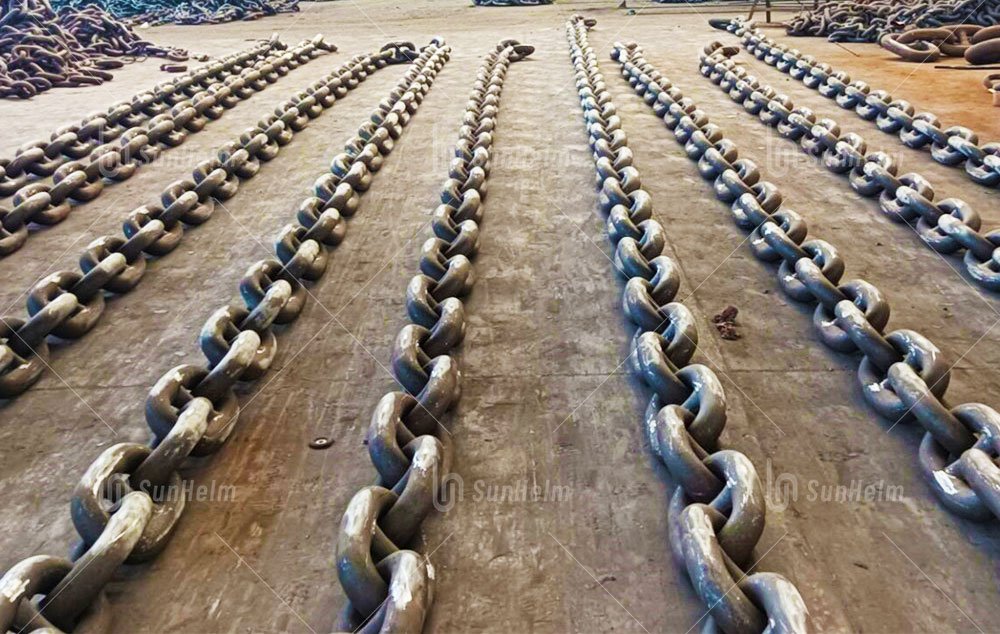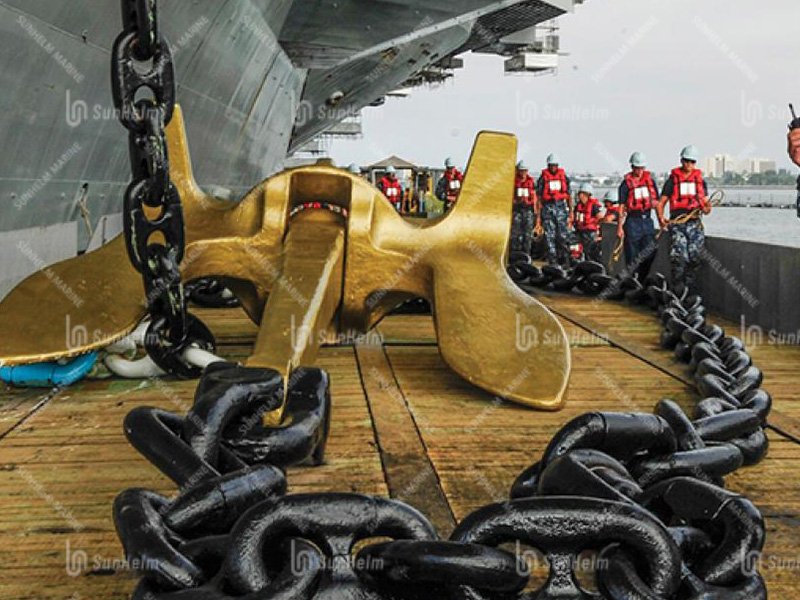Se você possui um navio, já sabe que as correntes de âncora não são apenas elos de aço pesados. Elas mantêm sua embarcação segura quando você lança a âncora. Mas qual é a verdadeira "regra de ouro" quando se trata de usá-las? Vamos explicar em linguagem simples.

1. A grande ideia: Escopo
O "escopo" é simplesmente a quantidade de corrente que você coloca para fora em comparação com a profundidade da água.
- Águas calmas e protegidas → pelo menos 5:1 (cinco vezes a profundidade).
- Condições normais → 6-7:1 é o ponto ideal.
- Vento forte ou ondas → ir até 8-10:1.
Exemplo: Se a água (mais a maré) tiver 10 metros de profundidade, com uma proporção de 6:1, você deve pagar 60 metros de corrente. Matemática fácil.
2. Por que as cadeias são importantes
As correntes são pesadas. Esse peso mantém a tração da âncora plana em vez de reta. Uma tração plana faz com que ela morda e segure melhor.
- Os navios grandes geralmente usam toda a cadeia.
- Alguns barcos menores usam uma mistura de corrente e corda, mas sempre mantenha alguma corrente perto da âncora.
- A corda é mais leve, mas a corrente lhe dá uma força de sustentação real.
3. Escolhendo a corrente certa
Esqueça as suposições. O tamanho e o comprimento da corrente devem corresponder à sua embarcação e à âncora.
- Sempre tem corrente suficiente para cobrir seus pontos de ancoragem mais profundos, usando o escopo correto, além de alguns sobressalentes.
- Não encurte o caminho. A maré, o vento ou a correnteza podem mudar rapidamente.
4. Colocando a âncora da maneira correta
- Alinhe-se contra o vento ou a corrente.
- Abaixe a âncora lentamente - não a jogue.
- Comece a pagar a corrente à medida que o barco se desloca para trás.
- Quando a corrente for suficiente, puxe-a suavemente para trás para que a âncora se prenda.
- Prenda a corrente e adicione um amortecedor, se tiver um, para amortecer os choques.
5. O fundo do mar e o clima também contam
- Areia ou lama → Boa fixação, mas a lama pode precisar de mais alcance.
- Fundos rochosos ou mistos → mais difícil de segurar, às vezes inútil.
- Mudança de vento ou maré → Sempre deixe espaço extra; seu barco vai balançar.
6. Erros comuns
- Apenas observando a profundidade da água e esquecendo a maré.
- Usar o escopo mais curto possível para "economizar tempo".
- Não verificar se há elos desgastados ou enferrujados.
- Esquecer de marcar o comprimento da corrente ao fazer o pagamento.
7. Cuidados com a corrente de forma simples
- Inspecione os links próximos à âncora e faça um arco com mais frequência.
- Substitua os elos dobrados ou finos.
- Certifique-se de que as manilhas estejam bem travadas.
- Mantenha a ferrugem sob controle; regalvanize ou troque se necessário.
8. Perguntas frequentes rápidas
P: Qual é a quantidade de corrente que devo carregar?
R: O suficiente para seu ponto de ancoragem regular mais profundo no escopo adequado, além de mais.
P: Quando devo usar duas âncoras?
R: Quando as mudanças de vento são grandes ou quando uma âncora sozinha não aguenta.
P: Minha âncora continua arrastando - e agora?
R: Tente reiniciá-lo, mude o ângulo ou mude para um fundo melhor.
Conclusão final
A regra geral é: De 5 a 7 vezes a profundidade em condições normais, de 8 a 10 vezes em clima pesado. As correntes de ancoragem proporcionam peso, resistência e tranquilidade, mas somente se você usar o comprimento certo e mantê-las em bom estado.


